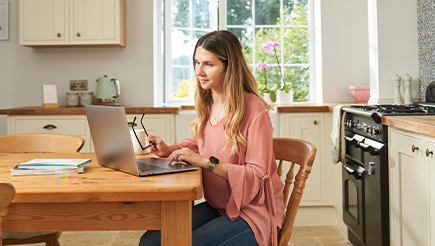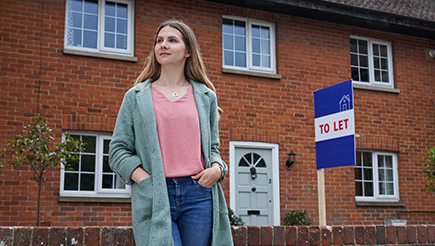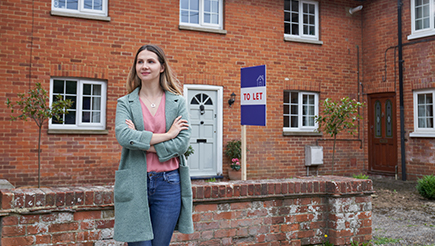From working out how much rent you’ll charge to getting to grips with tenant deposit protection schemes, being a landlord means spinning plenty of plates to keep your tenants happy and your practice legally compliant.
But whether you’re a newbie or a long-term letter, one of the trickiest tasks of such a time-intensive career is finding the opportunity to get to grips with revisions to the rules and regulations that landlords need to follow – or even who or what to ask if you’re unsure of your next step.
But as the old saying goes: there’s no such thing as a stupid question. That’s why we’ve rounded up answers to some of the most common questions landlords encounter in their careers. After all, knowledge is power and the more you know, the better you can handle whatever landlord life throws at you.
What is landlord insurance?
Landlord insurance – otherwise known as buy-to-let insurance - is an amalgamation of various covers created to offer protection to a landlord and the property they are letting out. Even if you have the most respectful tenants, accidents can happen, resulting in repairs that could leave you seriously out of pocket. That’s where landlord insurance comes into play: offering protection from accidental damage to loss of rental income and more.
Is landlord insurance different from home insurance?
Yes. While home insurance and landlord insurance may sound like the same thing, they’re classed differently because, as a landlord, you receive an income through rent. While both types of insurance cover damage to the building, your home insurance may not cover you if the property is let out to tenants. Learn more about the differences between home insurance and landlord insurance to best protect your rental property.
How do I work out how much rent I should charge?
Calculating how much rent to charge your tenants is a crucial component of your investment. Charge too little and you could undercut your profit margin and safety net for any rainy days. Charge too much and you could put off any prospective tenants, resulting in long periods of vacancy. To ensure you’re charging a fair but competitive rate, take the following into consideration:
- The location of the property and surrounding local amenities including shops, schools and transport links
- Whether you plan to market the property furnished or unfurnished
- The type of tenants you are trying to attract e.g. young professionals or families
- The desirability of your property based on its size and condition
To help ensure your guestimates are accurate, it's always best to speak to an agent to get their thoughts on rental values within your area as well as consulting rental indexes.
Should I furnish my rental property?
This should be something that you bear in mind when you’re working out how much rent you intend to charge tenants. Whether you fully furnish or part furnish your property is up to you, but there are some considerations to take into account. If you’re letting your property to a family, it might be more likely that they will have their own furniture; however, if you are chasing the young professional market then offering a fully furnished property will attract tenants. If you do provide furniture, make sure it’s practical, easy replaceable and complies with all safety standards for furniture and furnishings.
How does loss of rent insurance work?
Many landlords rely on rental income to help them keep on top of maintenance costs and other life commitments, so any obstructions can have serious consequences. Loss of rent insurance protects you against lost income if your property becomes uninhabitable due to an accidental fire, flooding or damage, or if an incident causes a reduction in your rental income. With an AXA policy, you can get protection that covers a shortfall in rental income for up to 36 months – offering additional peace of mind should the worst happen.
How do I calculate my rental yield?
A rental yield is calculated by dividing the amount you paid for the property by the amount you expect to receive in yearly rent. Your rental yield will be affected by the cost of owning or managing the property – including maintenance and running costs - so you will have to calculate a net yield to get a more accurate return on your investment.
How much tax does a landlord pay?
A landlord will normally pay tax on any profit made from renting out a property. The amount of tax you pay on your rental income will depend on your situation. Your profit is classed as the amount left over once you've added together all your rental income and deducted any allowable expenses. Rental profits fall into the same tax bands as income you receive from your business or employment, i.e. 20% for the basic rate of tax, 40% if you’re a higher rate taxpayer, and 45% if you’re in the additional rate bracket. Scotland has a different rate of income tax to the rest of the UK, so make sure to keep this in mind when you’re calculating what you owe HMRC.
How much stamp duty will I have to pay?
Changes to stamp duty on buy-to-let properties in April 2016 mean that anyone buying an additional property – which includes buy-to-let landlords as well as those buying holiday homes and second homes – must pay an extra 3% in stamp duty. Buy-to-let stamp duty rates are tiered and reflect the price of the property, meaning you will pay 0% for a property below £40,000 up to 15% on a property worth £1.5m or more. Make sure to factor this additional taxation into your calculations when deciding on what rent rates to charge potential tenants.
How do I protect my tenant's deposit?
It is a legal requirement that a tenant's deposit is placed in a tenant deposit protection scheme if you rent out your property on an assured shorthold tenancy that started after 6 April 2007. These government-backed schemes ensure that tenants will get their deposit back (within ten days after reaching an agreement with landlords on the amount owed) if they meet the terms of your tenancy agreement, haven’t damaged the property and have paid all rent and bills accordingly. There are separate schemes available depending on where your property is in the United Kingdom.
There’s no doubt about it, keeping up to speed with your commitments as a landlord can be challenging but a healthy dose of commitment and organisation can go a long way to helping you establish and maintain a healthy professional relationship with your tenant.
Not only does AXA offer you the tailorable protection suited to the needs of your property, we’re there to provide you with expert advice at every step of your landlord journey. Whether you’re looking for some time-saving tips, a jargon-buster to break down complex landlord lexicon, or a step-by-step guide to being a landlord to guide you from your first year and beyond, AXA are on hand 24/7 to help make your landlord workload that little bit lighter.






